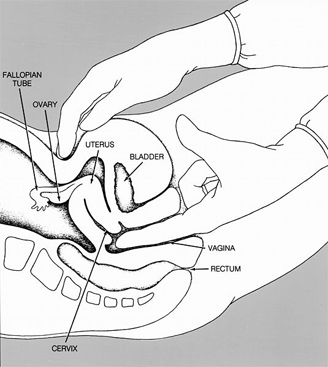Guidelines Recommend Against Routine Pelvic Exams
A new clinical practice guideline from the American College of Physicians recommends against conducting routine pelvic exams in average-risk, asymptomatic women.
The ACP recommends against routine pelvic exams in average-risk, asymptomatic women.

A new clinical practice guideline from the American College of Physicians (ACP) recommends against conducting routine pelvic exams in average-risk, asymptomatic women, finding they have no proven benefit and may lead to unnecessary pain, anxiety, and costs.
“Our primary conclusion is that no data support the use of routine pelvic examination (excluding cervical cytologic examination) for reducing the morbidity or mortality of any condition,” the authors state in an evidence report supporting the guideline published in the July 1 Annals of Internal Medicine. “Furthermore, limited evidence suggests that screening pelvic examinations may be associated with pain, discomfort, fear, anxiety, or embarrassment in about one-third of women and can lead to unnecessary, invasive, and potentially harmful diagnostic procedures.”
The recommendations, based on a systematic review of studies published since 1946, do not apply to Pap smears and visual inspection of the cervix during routine cervical cancer screening, which should be performed at intervals recommended by evidence-based guidelines for specific groups of women defined by age, presence of a cervix, and prior Pap test results.
Pelvic exams used to screen for ovarian cancer have a positive predictive value of less than 4%, according to the report. In the Prostate, Lung, Colorectal, and Ovarian cancer screening trial that enrolled more than 78,000 women over 12 years, for example, the exam was dropped from the screening protocol after 5 years, because it did not detect any malignancies.
Other studies report that women who experience pain or discomfort during or before a pelvic exam are less likely to return for subsequent medical visits. The authors point to some data suggesting that fear of the exam may lead some younger women to delay or avoid obtaining oral contraceptives.
Pelvic exams also incur substantial costs to the health care system, the authors note. The United States spends an estimated $2.6 billion on preventive gynecologic exams and associated services annually, with about a third of that total for unnecessary cervical cancer screening in women under age 21.
The authors acknowledge that there may be indirect benefits of routine pelvic exams, such as encouraging women to access health care and receiving other gynecologic services and providing an opportunity to discuss sensitive issues, such as incontinence or sexual dysfunction. However, no studies have evaluated these possible benefits.
Despite a lack of evidence, many providers continue to perform routine exams as part of the well women annual visit, the authors note. In addition, the American College of Obstetricians and Gynecologists recommends annual exams, although the recommendation is based solely on expert opinion.
“Despite its widespread use in clinical practice, data supporting the use of the pelvic examination in asymptomatic women not at increased risk for gynecologic cancer are scant,” the authors conclude. “An important area for future research is the development and testing of strategies to reduce the high rate of inappropriate use of the pelvic examination.”
Newsletter
Stay up to date on recent advances in the multidisciplinary approach to cancer.